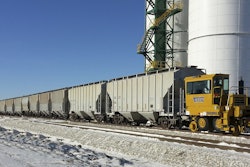In the overnight session corn, soybeans and wheat all traded lower but were able to recover to mostly unchanged going into this morning’s pause in trade. Corn is down ¼ a cent, soybeans are down ½ a cent and wheat is down 1 ¼ cents. The U.S. dollar is trading slightly below the 100.785 high which was printed last Friday. This week traders will be paying close attention to the FOMC meeting on Tuesday and Wednesday to get more clues on the direction of interest rate policy.
The NOPA crush report will be released at 11 AM CST today. Analysts are expecting 148.537 million bushels of soybeans crushed in the month of February which would be the largest February crush on record and a nearly 7 mllion bushel increase from last year. In a poll of eight analysts the average crush estimate ranged from 143.2 million bushels to 160.5 million bushels. Analysts see soyoil stocks coming in at 1.332 billion lbs which would be up from 1.228 billion lbs last month.
The recent warm-up has triggered flooding on the Ohio River which has halted grain loading at many river terminals. The National Weather Service has issued a flood warning in the Cincinnati area and expects the river to stay at flood levels at least through Thursday. This will hurt spot basis along the river this week.
Weather this week is expected to be wetter for the Plains which have been experiencing excessive dryness. Although the precipitation is expected to be light throughout the next 10 days the added moisture should provide some benefit to the region’s wheat. Brazil continues to get precipitation in the north which has slowed harvest in the region. Despite the rains, there are no significant concerns for that region yet. Argentina looks to see drier weather over the next 6-15 days which should help the northern fields which have been saturated by heavy rains throughout February and March.














